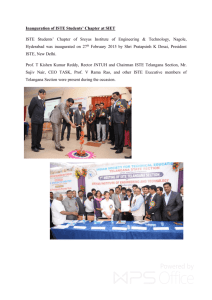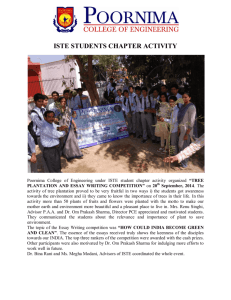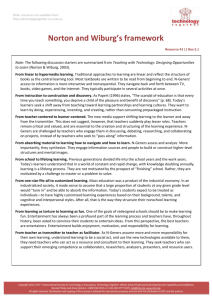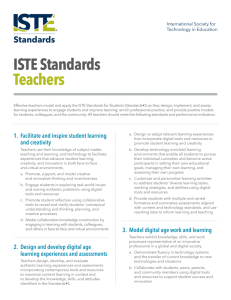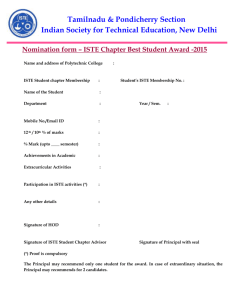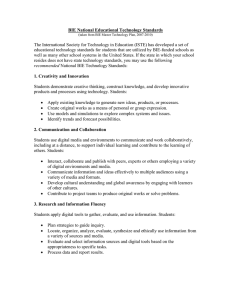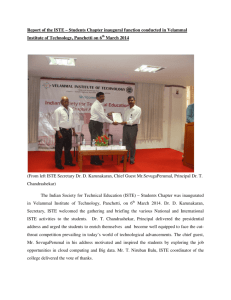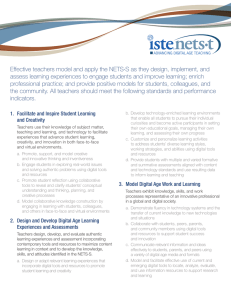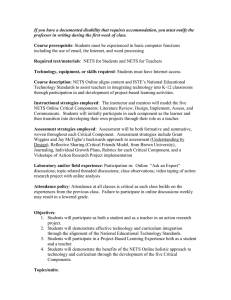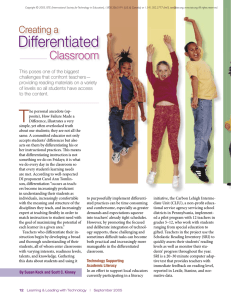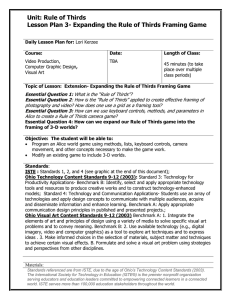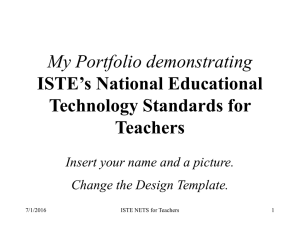ISTE Standards for Students are the standards for
advertisement
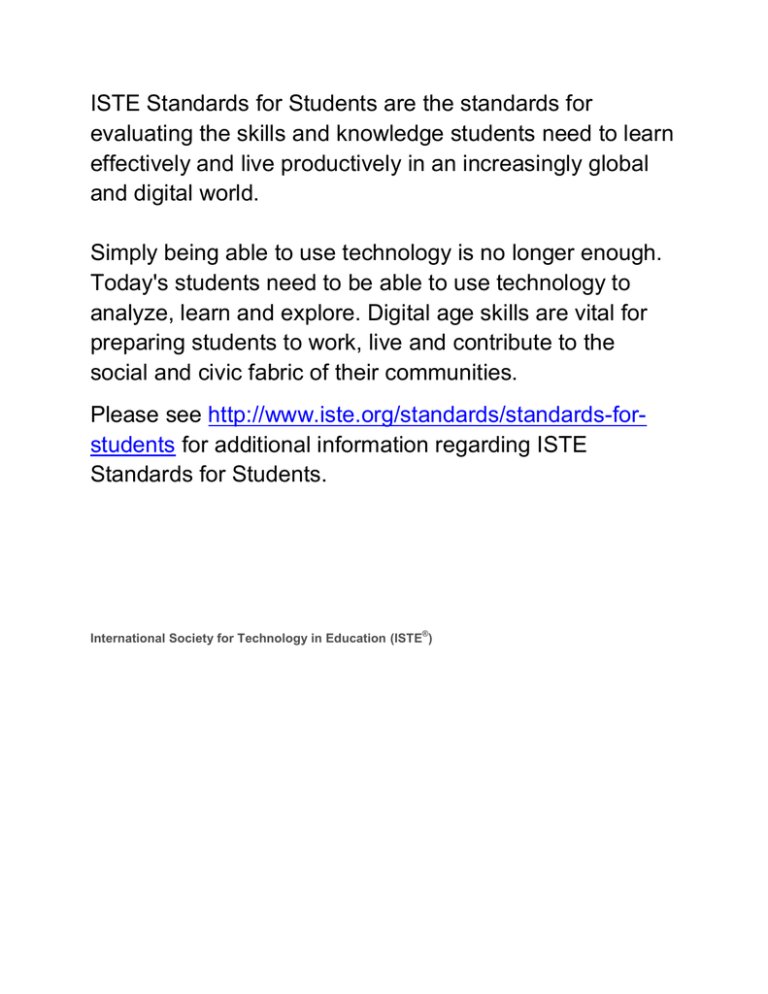
ISTE Standards for Students are the standards for evaluating the skills and knowledge students need to learn effectively and live productively in an increasingly global and digital world. Simply being able to use technology is no longer enough. Today's students need to be able to use technology to analyze, learn and explore. Digital age skills are vital for preparing students to work, live and contribute to the social and civic fabric of their communities. Please see http://www.iste.org/standards/standards-forstudents for additional information regarding ISTE Standards for Students. ® International Society for Technology in Education (ISTE ) 1. Creativity and Innovation Students demonstrate creative thinking, construct knowledge, and develop innovative products and processes using technology. a. Apply existing knowledge to generate new ideas, products, or processes b. Create original works as a means of personal or group expression c. Use models and simulations to explore complex systems and issues d. Identify trends and forecast possibilities 2.Communication and Collaboration 3.Research and Information Fluency Students apply digital tools to gather, evaluate, and use information. a. Plan strategies to guide inquiry b. Locate, organize, analyze, evaluate, synthesize, and ethically use information from a variety of sources and media c. Evaluate and select information sources and digital tools based on the appropriateness to specific tasks d. Process data and report results 4.Critical Thinking, Problem Solving, and Decision Making Students use digital media and environments to communicate and work collaboratively, including at a distance, to support individual learning and contribute to the learning of others. Students use critical thinking skills to plan and conduct research, manage projects, solve problems, and make informed decisions using appropriate digital tools and resources. a. Interact, collaborate, and publish with peers, experts, or others employing a variety of digital environments and media b. Communicate information and ideas effectively to multiple audiences using a variety of media and formats c. Develop cultural understanding and global awareness by engaging with learners of other cultures d. Contribute to project teams to produce original works or solve problems a. Identify and define authentic problems and significant questions for investigation b. Plan and manage activities to develop a solution or complete a project c. Collect and analyze data to identify solutions and/or make informed decisions d. Use multiple processes and diverse perspectives to explore alternative solutions 5. Digital Citizenship Students understand human, cultural, and societal issues related to technology and practice legal and ethical behavior. a. Advocate and practice safe, legal, and responsible use of information and technology b. Exhibit a positive attitude toward using technology that supports collaboration, learning, and productivity c. Demonstrate personal responsibility for lifelong learning d. Exhibit leadership for digital citizenship iste.org/nets 6. Technology Operations and Concepts Students demonstrate a sound understanding of technology concepts, systems, and operations. a. Understand and use technology systems b. Select and use applications effectively and productively c. Troubleshoot systems and applications d. Transfer current knowledge to learning of new technologies NETS·S © 2007 International Society for Technology in Education. ISTE® is a registered trademark of the International Society for Technology in Education.
